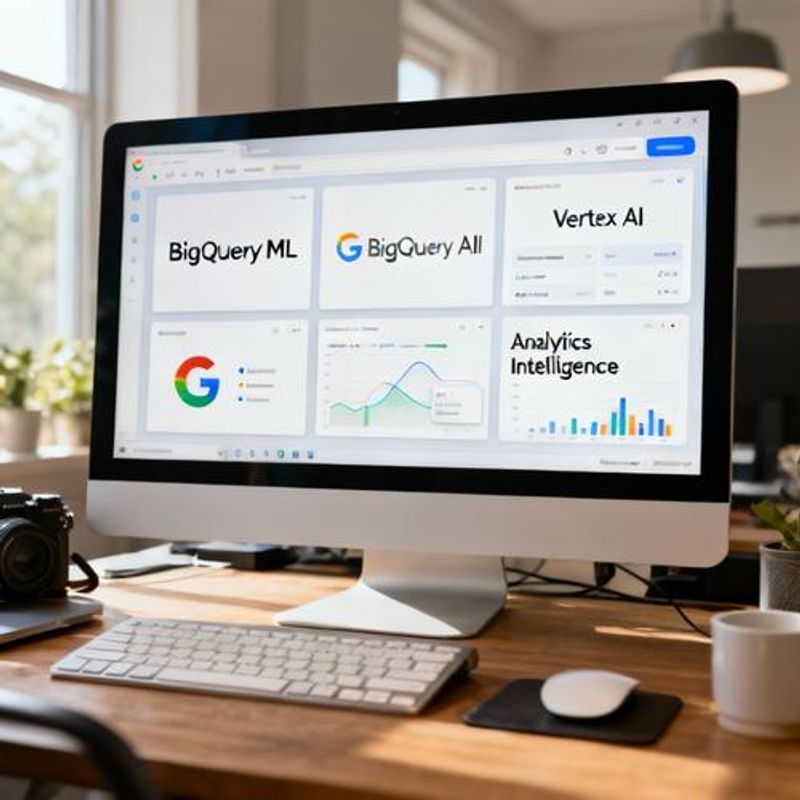Complete Guide to Google AI Tools Names and Applications for Data Analysis in 2024

Struggling to keep track of Google's expanding AI toolkit for data analysis? You're not alone. With Google releasing new AI-powered tools regularly, data analysts often miss opportunities to streamline their workflows and enhance analytical capabilities. This comprehensive guide catalogs all essential Google AI tools names, their specific applications for data analysis, and practical implementation strategies that can transform your analytical processes.

Why Google AI Tools Matter for Modern Data Analysis
Data analysts face mounting pressure to deliver insights faster while handling increasingly complex datasets. Traditional analysis methods often create bottlenecks in model building, pattern recognition, and predictive analytics. Google's AI ecosystem addresses these challenges by providing integrated tools that automate routine tasks, enhance analytical accuracy, and scale computational resources on demand. Understanding the specific names and capabilities of these tools enables analysts to select the right solution for each analytical challenge.
Quick Reference: Essential Google AI Tools for Data Analysts
Here's your at-a-glance overview of the most impactful Google AI tools for data analysis workflows:
- BigQuery ML - SQL-based machine learning for large datasets
- Vertex AI - Unified platform for building and deploying ML models
- Analytics Intelligence - Automated insights and anomaly detection
- AutoML - No-code machine learning model creation
- Dataflow - Stream and batch data processing with ML integration

Core Google AI Tools Names and Analytical Applications
BigQuery ML: SQL-Native Machine Learning
BigQuery ML revolutionizes how data analysts approach machine learning by enabling model creation directly within SQL queries. This tool eliminates the traditional barrier between data analysis and machine learning, allowing analysts to build regression, classification, clustering, and forecasting models without leaving their familiar SQL environment. Key applications include customer lifetime value prediction, sales forecasting, and anomaly detection in large datasets. The tool supports popular algorithms like linear regression, logistic regression, k-means clustering, and time series forecasting models.
Vertex AI: Comprehensive ML Platform
Vertex AI serves as Google's unified machine learning platform, consolidating previously separate tools into a cohesive ecosystem. For data analysts, Vertex AI provides managed notebooks for exploratory analysis, feature engineering capabilities, and automated hyperparameter tuning. The platform excels in scenarios requiring custom model development, A/B testing of different algorithms, and production deployment of analytical models. Its integration with other Google Cloud services makes it particularly valuable for analysts working with multi-source data pipelines.
Analytics Intelligence: Automated Insight Discovery
Analytics Intelligence transforms traditional reporting by automatically surfacing significant trends, anomalies, and insights from Google Analytics data. This tool uses natural language processing to answer analytical questions in plain English, reducing the time analysts spend on routine data exploration. It's particularly effective for identifying unexpected traffic patterns, conversion rate changes, and segment-specific behaviors that might otherwise go unnoticed in manual analysis.
Implementation Templates and Use Cases
To help you get started, here are proven implementation patterns for common analytical scenarios:
Customer Segmentation Workflow
1. Data preparation in BigQuery with feature engineering
2. K-means clustering using BigQuery ML
3. Segment validation and profiling with Vertex AI notebooks
4. Automated monitoring setup through Analytics Intelligence
5. Model retraining schedule configuration
Predictive Analytics Pipeline
1. Historical data aggregation using Dataflow
2. Feature selection and model training in Vertex AI
3. Model evaluation and comparison using AutoML
4. Production deployment with automated retraining
5. Performance monitoring and alert configuration

Common Pitfalls and How to Avoid Them
Many analysts encounter predictable challenges when adopting Google AI tools. The most frequent mistake is attempting to use every available tool rather than selecting the right tool for specific analytical needs. BigQuery ML, for instance, excels with structured data but isn't optimal for image or text analysis. Another common error involves insufficient data preprocessing, leading to poor model performance regardless of the chosen algorithm. Cost management also trips up many teams—AutoML and Vertex AI can generate significant expenses if not properly configured with budget controls and resource limits. Finally, neglecting to establish proper model validation and monitoring processes often results in degraded performance going undetected in production environments.
Next Steps: Building Your Google AI Toolkit
Start your Google AI tools journey by identifying your most time-consuming analytical tasks and matching them to the appropriate tools from this guide. Begin with BigQuery ML if you're primarily working with structured data and SQL, or explore Vertex AI for more complex modeling requirements. Consider setting up a small pilot project to test tool integration with your existing data infrastructure. For hands-on learning, Google Cloud offers free tier access to most of these tools, allowing you to experiment without initial cost commitment. As you build expertise, focus on creating reusable templates and establishing best practices that can scale across your analytical team.